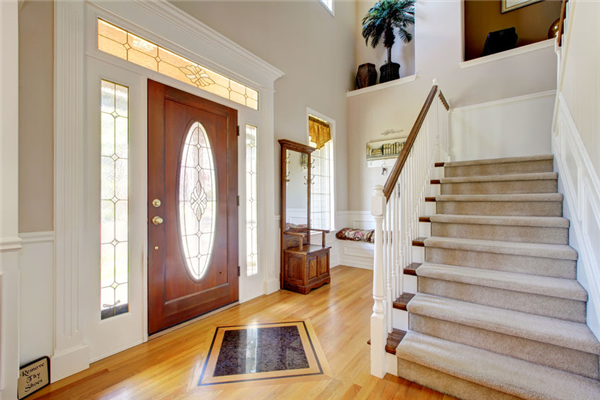A lot of home owners and renters discover that it’s difficult to beat the heat during summer or when they live in a location that has higher temperatures year-round. Different factors, including the nature of hot air, a home’s structural design and even human error when utilizing cooling and other systems, can make the upstairs portion of a home warmer than the downstairs. The following guide can help you to better understand this topic and make your home more comfortable:
Warm Air Floats
You’ve probably heard the phrase “warm air rises.” Typically, cool or cold air is dense and sinks below any warm or hot air in a structure. When air warms, as on hot days when the light from the sun is intense, air molecules spread out and the air becomes less dense and lighter. The interaction of cool and warm air causes displacement that makes warm air rise and essentially float on cool air. To decrease the amount of warm air upstairs without freezing yourself or loved ones by turning up the air conditioning system downstairs, install window air conditioners or a zone thermostat cooling system that makes it possible for you to adjust the upstairs temperature to a different level than the downstairs.
HVAC System Issues
The heating, ventilation and air conditioning system in your home helps control temperature and air quality. It must be maintained properly and used correctly to keep the temperature upstairs at a comfortable level. If it hasn’t been cleaned in a while, dust, dirt and other debris can cause it to overwork and even overheat parts, which adds to the indoor heat problem. Any debris blocking the vents can also reduce the amount of cool air that flows out of the system into upstairs rooms. Worse yet, the upstairs might be experiencing hotter than normal temperatures because you, a loved one or even a pet accidentally closed air vent registers that pump cool air into the rooms.
Windows Facing Sun
Another reason that the upstairs heats up more than the downstairs is that any windows facing the sun add additional heat through the glass to the rising/floating warm air that already exists on the second story level. Essentially, the extra heat makes the air hotter and push further upstairs via stairwells and cracks and gaps in ceilings or walls. Beyond the heat-reduction ideas already mentioned, you should consider using sunlight-blocking blinds and curtains. If you want to be able to see outside, consider attaching awnings above the windows instead to provide some cooling shade.
Sunlight on Roof
Lastly, the top of your roof is bombarded by sunlight every day when it’s not overcast outside. That light heats up the attic and nearby rooms, which adds to the amount of heat affecting the air upstairs. The best ways to fix this problem, outside of installing a zone thermostat system, it to use insulation to block the heat from seeping below the attic into upstairs rooms; install fans and vents that suck the hot air out of the upstairs through the outer walls; or redesign the roof so that it reflects back the light so that it doesn’t heat up too much. Many people have roofs covered with dark asphalt shingles or colors that absorb heat. By resurfacing the roof with a light-colored material, you can drastically reduce the amount of hot air upstairs.
Charlie Teschner started MESA Plumbing, Heating, and Cooling in 1982. Charlie has a journeyman and master plumber’s license. He was raised with a strong work ethic and he now applies those values to tasks such as Longmont, CO heating repair.
